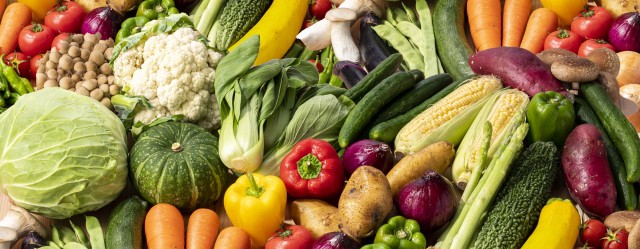
Since the UK-Japan Comprehensive Economic Partnership Agreement (EPA) entered into force on January 1, 2021, the free trade agreement between the UK and Japan has continued to evolve, bringing tremendous benefits to both countries in their main markets including food and beverage. Regarding the current state of the UK market, in 2020, about half (46%) of the food consumed in the UK was imported. After Brexit, the UK is expected to continue to increase its exports as well as imports of non-EU and EU products following a series of trade agreements with EU countries, New Zealand, Australia, and Japan.
In this issue, we asked our UK partner, Ashbury, the company dealing with food information, about the UK regulatory situation. This article covers points of particular note among the different labeling rules that arise when comparing the labeling systems between Japan and the UK.
Understanding the roles and responsibilities of the relevant regulatory agencies
When exporting foods, it is important to understand the related export system. The website of the Food Standards Agency in the UK, which supervises food labeling, provides information on standards and other practical information. Prepackaged food products distributed in the UK are subject to the Provision of Food Information Regulation (EU No. 1169/2011), and local authorities are responsible for ensuring and monitoring compliance with food labels in line with their food information regulations. Certain foods such as bread, flour, chocolate, and jam are controlled by product specific regulations in the UK. As for food additives, the EU Regulation on Food Additives No 1333/2008 defines applicable food categories and (EU) No 231/2012 defines specifications for food additives. The Advertising Standards Agency (ASA) is the regulatory agency for most advertising in the UK media and is responsible for monitoring advertising and dealing with problems.
Labeling of allergens and nutrition
Allergen and nutrition labeling methods vary widely from country to country, and differences in format, layout and typesetting are among the most common reasons why food labeling does not meet standards. It should be noted that labeling for allergens and nutrition facts in the UK is more broadly inclusive than those in Japan, such as for “nuts”. According to the UK Food Standards Agency alert, the most common recalls are caused by incorrect allergen labeling or undeclared contamination.
The UK specifies 14 allergens including peanuts, milk, eggs, and a wide range of crustaceans, nuts, molluscs, etc. All 14 different allergens or products containing them must be labeled unless the allergen or its product is clearly indicated by the legal name of the food. In addition, they must be emphasized in a way that distinguishes them from other ingredients, such as in bold. In particular, in the UK labeling, it is an industry standard to attach allergen advice statements, such as
-Allergen Advice: for allergens, see ingredients in bold.
Nutrition labeling must follow the prescribed format specified in Annex XV of (EU) 1169/2011. The format has a prescribed order: energy values (kJ and kcal), fat, saturates, carbohydrates, sugars, proteins, and salts (all in grams). Other than Japanese basic labeling items, saturates and sugars are also subject to mandatory labeling.
Difference in concept
There are similar labeling items in Japan about how to store, how to cook, or best before date, etc. but there are some differences in the concepts.
Used by/Best before date labeling
In the U.K., “best before” date shows the period of time related to the preservation of food quality, while “use by” date represents the period of time in which it is safe to eat and drink for foods that are susceptible to spoilage and may pose a risk to human health within a short period of time. As for “best before date”, it is generally indicated on the label, but some types of food products are exempt from showing the date. On the other hand, products manufactured in the UK often have specific date labeling such as “Use within 3 days after opening. This is because for safety reasons, if a different storage method is required for a product after opening, the storage method to be followed and the open life information must be indicated. For frozen meat, frozen meat preparations and frozen unprocessed fishery products, the date of freezing or the date of first freezing in cases where the product has been frozen more than once after the word “Frozen on”.
Country of origin
The country of origin labeling requirement does not specify special rules except for certain foods, such as meat and fish, or the case where special rules must be applied. The indication of the country of origin or place of provenance of a food shall be mandatory where failure to indicate this might mislead the consumer as to the true country of origin or place of provenance of the food. If the primary ingredient in the food comes from somewhere different from where the product says it was made, the label must show the country of origin of such primary ingredient.
Appropriate translation and standards-based labeling
Food labeling plays the role of “protecting consumer safety.” Literal translation may result in words and phrases that are not acceptable under local standards, and such misleading information may cause consumers to have safety concerns. For example, the word “natural” is often banned in the UK and has a clear definition. On the other hand, in Japan, it cannot be used in additives including flavours, whereas in the UK it can be used for the labeling of terms such as “natural flavours” if the specific requirements listed in (EC) No 1334/2008 are met.
It is important to compare the system of exporting partner countries and that of Japan, grasp the difference, understand the background of exporting countries and have labeling complied with their regulations. This article only covers a part of the differences in food labeling standards between the UK and Japan, but there are other differences as well. We hope that understanding the differences between the systems will give us a chance to understand each other’s culture and become one of the fruitful aspects of our work.
References
- Official Statistics – United Kingdom Food Security Report 2021: Theme 2: UK Food Supply Sources
- Regulation(EU)No 1169/2011 on the Provisions of Food Information to Consumers
- Regulation (EC) No 1333/2008 of the European Parliament and of the Council
- COMMISSION REGULATION (EU) No 231/2012
- Regulation (EC) No 1334/2008
- Guidance “Food labelling: giving food information to consumers”
- Guidance “Food standards: labelling and composition”
- Criteria for the use of the terms fresh, pure, natural etc. in food labeling
- Food Standards Agency – News and alerts
- Ministry of Agriculture, Forestry and Fisheries 2020 Export Environment Improvement Promotion Consignment Project (Survey on Food Standards, etc.) Survey Report: UK food labeling
Newsletter Signup
We issue monthly e-newsletters, which provide you with the latest updates on food labeling/regulations in Japan.
If you want to make sure to not miss any issue, please click below.
Related Service
Research Services on Ingredients & Food Labeling -For the Japanese Market-
We verify the conformity of ingredients and additives with the standards for use in Japan based on specifications such as formulation lists. We also verify the conformity of the proposed labeling of ingredient names, nutrients, etc. with the labeling standards based on specifications such as formulation lists.

Label bank Co., Ltd. Regulatory inspections and Consulting Research staff
Born in Taiwan. Specializing in microbiology and immunology, she is engaged in research work on ingredients and additives imported to Japan from overseas, as well as database management for legal search systems, including additive names and standard values.


